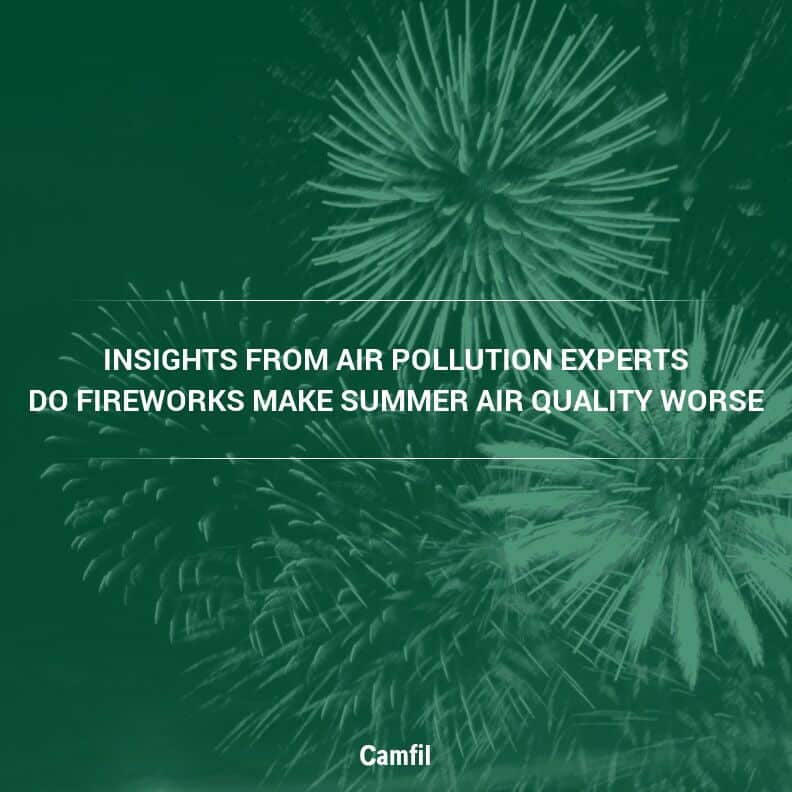
Insights from Air Pollution Experts Do Fireworks Make Summer Air Quality Worse
Fireworks are a must-have for many celebrations in the United States, but are particularly characteristic of the Fourth of July. Continue reading to learn from Camfil’s air filtration specialists about the kinds of pollution emitted by firework displays and their effects on overall air quality, in addition to some of the other biggest contributors to poor summer air quality.
What Types of Air Pollution Come from Firework Displays?
Fireworks are made of gunpowder (or black powder), a blend of potassium nitrate, sulfur, and charcoal, which burns rapidly and explodes to serve as a propellant, in addition to a variety of metals that create their characteristic bright colors
When burned, gunpowder produces pollutants, usually including:
- Carbon dioxide (CO2), which can lead to headaches and dizziness at high levels.
- Carbon monoxide (CO), a toxic gas that, when inhaled, reduces oxygen flow throughout the body, causing dizziness, confusion, and potentially leading to organ damage and death.
- Nitrogen (N2), a stable gas that naturally constitutes the majority of the Earth’s atmosphere.
- Potassium carbonate (K2CO3), a caustic chemical used in industrial processes that can cause severe respiratory irritation inhaled.
- Potassium sulfide (K2S), which forms potassium hydrosulfide and potassium hydroxide in reactions with the moisture in the air; these chemicals can damage the eyes, burn the skin, and irritate the lungs, potentially leading to permanent respiratory tissue damage at high...
Read Full Story: https://cleanair.camfil.us/2024/07/03/insights-from-air-pollution-experts-do-fireworks-make-summer-air-quality-worse/
Your content is great. However, if any of the content contained herein violates any rights of yours, including those of copyright, please contact us immediately by e-mail at media[@]kissrpr.com.